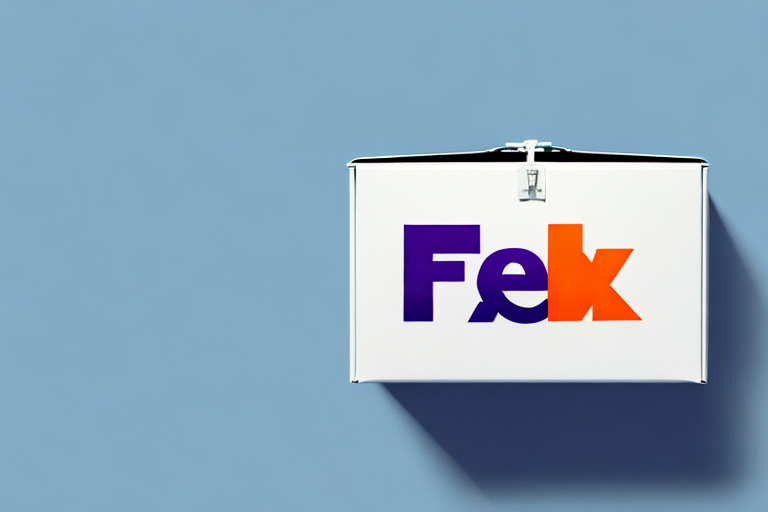Ensuring Your Mail is Insured for Maximum Protection
Are you concerned about the safety and security of your mail? You're not alone. With the constant risk of theft, damage, and loss during transit, investing in a reliable mail insurance policy is essential. This article explores the key aspects of mail insurance and provides guidance on selecting the right policy to meet your needs.
Understanding the Importance of Mail Insurance
Mail insurance is an effective solution to protect against financial loss if your mail packages are lost, damaged, or stolen. It's an affordable way to safeguard your valuable and sensitive documents, belongings, and other items. By investing in comprehensive mail insurance, you can have peace of mind knowing your mail is fully protected against unforeseen circumstances.
Additionally, mail insurance often includes benefits such as expedited shipping, tracking, and signature confirmation. These features help ensure that your mail arrives at its intended destination on time and in good condition. Some policies may also offer coverage for identity theft or fraud resulting from lost or stolen mail. It's crucial to carefully review the terms and conditions of any mail insurance policy to fully understand the coverage and benefits provided.
How to Determine the Value of Your Mail
Determining the value of your mail is a critical step in selecting the right mail insurance policy. Begin by taking an inventory of all the items you're sending, including their brand, model, condition, and replacement cost. Remember that some items may hold sentimental value, which is challenging to quantify.
Consider the shipping method you choose, as different methods come with varying levels of insurance coverage. For valuable items, opt for a shipping method that offers higher insurance coverage. For example, using services like UPS or FedEx can provide more robust insurance options compared to standard postal services.
The value of your mail may change over time, especially for items that appreciate in value, such as collectibles or antiques. Having these items appraised before shipping ensures you have an accurate value, allowing you to choose the appropriate insurance policy to protect them.
Factors That Affect Mail Insurance Rates
Mail insurance rates are influenced by several factors, including the value of the mail, destination, and shipping method. For instance, sending fragile or high-value items typically incurs higher insurance rates due to the increased risk of damage or loss during transit.
The mode of transportation also plays a role in determining insurance rates. Air shipping often has higher insurance rates compared to ground transportation because of the higher risk associated with air travel. Conversely, ground transportation may offer lower rates due to relatively lower risks of damage or loss.
The type of mail being sent affects insurance rates as well. Sending hazardous materials or perishable items generally results in higher insurance costs due to the potential risks involved in transit.
The Different Types of Mail Insurance Policies
Various types of mail insurance policies cater to different shipping needs. Standard mail insurance typically provides coverage for up to $500 per package, suitable for regular mail. However, for valuable or delicate items, comprehensive insurance or courier insurance is recommended, offering higher coverage levels.
Comprehensive Insurance
Comprehensive insurance covers a broad range of risks, including loss, damage, theft, and delay. Ideal for high-value items like jewelry, electronics, and artwork, comprehensive policies often cover up to $5,000 per package, with options for higher coverage at an additional fee.
Courier Insurance
Designed for businesses that regularly ship high-value items, courier insurance covers loss, damage, and theft during transit. It also includes liability coverage for any damages or injuries caused by the courier. These policies typically offer coverage up to $50,000 per package, with higher limits available for businesses with specific needs.
Choosing the Right Mail Insurance Policy
Selecting the right mail insurance policy can be overwhelming, but it's crucial to ensure your specific needs are met. Consider factors such as coverage limits, deductible amounts, and the reputation of the insurance provider. Always read the fine print before signing up to understand all terms and conditions fully.
Evaluate the types of items you will be shipping. Some policies may exclude or limit coverage for certain items, such as electronics or jewelry. Ensure the policy you choose covers the specific items you intend to send to avoid unexpected expenses.
It's advisable to compare quotes from multiple insurance providers to secure the best coverage at a competitive price. Don't hesitate to ask questions and clarify any doubts before making a final decision. With the right mail insurance policy, you can confidently protect your shipments against loss or damage.
What to Look for in a Mail Insurance Provider
When selecting a mail insurance provider, prioritize reliability, reputation, and customer support services. Choose an insurer known for timely claims processing, excellent customer service, and a secure online platform for paying premiums, tracking claims, and managing policies.
Review the coverage options offered by different providers. Some insurers may provide limited coverage for specific types of mail, such as international shipments or high-value items. Carefully examine policy details and exclusions to ensure the provider meets your specific needs.
Tips for Filing a Claim with Your Mail Insurance Company
If you need to file a claim, gather all necessary supporting documents, such as receipts, photos of damaged items, and correspondence with the shipping carrier. Follow the correct procedure and submit the claim within the specified time frame to avoid delays or denials.
Be honest and accurate when providing information about the damaged items. False or misleading information can result in claim denials. Additionally, maintain a record of all communications with the insurance company, including phone calls and emails, to stay informed about your claim's status.
Understand the terms and conditions of your mail insurance policy. Some policies have exclusions or limitations on certain types of items or damages. Review your policy carefully and ask your insurance provider any questions before filing a claim.
Common Mistakes to Avoid When Insuring Your Mail
Avoid common mistakes such as under-insuring your mail, failing to declare the actual value of items, not adding sufficient padding and protection to packages, and ignoring policy restrictions and exclusions. Double-check all details before sending your mail to prevent potential issues.
Properly document the contents of your packages by keeping a detailed list of items and their values. This documentation is crucial if you need to file a claim in the future. Taking clear photos of items before packaging can also aid in the claims process.
Maximizing the Benefits of Your Mail Insurance Policy
To maximize the benefits of your mail insurance policy, regularly review and update your policy as needed. Consider bundling your insurance policies to receive package discounts. Whenever possible, avoid sending highly valuable or irreplaceable items by mail and opt for alternative transportation methods, such as couriers or in-person delivery.
Understand the coverage limits and exclusions of your policy. Some policies may not cover certain types of items or may impose coverage limits. Read the policy carefully and ask questions to ensure you have appropriate coverage for your needs.
Maintain a record of the items you send through the mail and their values. This practice can help you receive appropriate compensation for any lost or damaged items and streamline the claims process.
Conclusion
Mail insurance is an essential investment to protect your mail from mishaps during transit. By following these tips and guidelines, you can select the right policy that best suits your needs and ensures maximum protection for your valuable items. Regularly reviewing and updating your policy, properly documenting your shipments, and choosing a reputable insurance provider will help you get the most out of your mail insurance coverage.






















